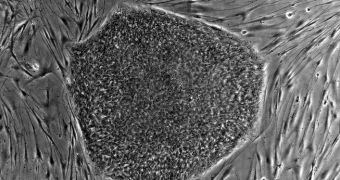According to a team of experts, stem cells extracted from a patient's own body fat can be successfully used in regenerative therapies aimed at treating that person. The applications that are now possible using this approach are plenty, experts say, so the method should be put into mainstream use.
Fat-derived stem cells can primarily be used for soft tissue reconstruction. This is very useful when doctors need to cover the gap left behind by a removed tumor, or when they want to reconstruct the tissue of a breast removed following breast cancer.
Creating tissue-engineered cartilage or bone is also possible with these cells, as is the treatment of cardiovascular diseases and other conditions, say experts from Queen's University, in Canada.
Researchers here, led by Dr. Lauren Flynn, believe that regenerative medicine is the way to the future in treating patients suffering from a wide array of diseases. Flynn is a researcher, and also a professor with the Departments of Chemical Engineering and Anatomy and Cell Biology at the university.
The interdisciplinary group here has been working on developing new methods of extracting stem cells from fat. The next step is to figure out how to transform them into mature tissue substitutes in an efficient manner that would ensure the cells' survival, Science Blog reports.
One limitation that the team is aware of is the fact that fat-derived stem cells cannot be made to differentiate into a wide array of other cell types, like embryonic stem cells can. However, the former do have some advantages, the group adds.
“The advantages include less ethical controversy, abundant cell availability from discarded tissues from elective surgeries like breast reductions and tummy tucks, and a much reduced possibility for immune rejection when re-implanting cells extracted from a person’s own fat,” Dr. Juares Bianco says.
The expert holds an appointment as a postdoctoral fellow in the QU Department of Chemical Engineering and the Human Mobility Research Center (HMRC). Funds for the new research project are provided by the Natural Sciences and Engineering Research Council (NSERC).
One of the approaches the group is taking to developing soft tissues form these stem cells includes the removal of cells from fat tissue, and the creation of 3D tissue scaffold called “decellularized adipose tissue” (DAT).
This tissue can then be used to create soft tissues for used in reconstructive procedures such as breast replacement surgeries and so on. The potential these stem cells and DAT have will undoubtedly be expanded in the future, when both become widely available to many research teams.

 14 DAY TRIAL //
14 DAY TRIAL //